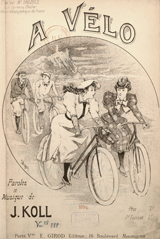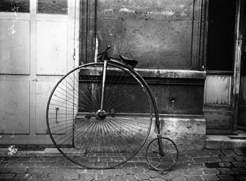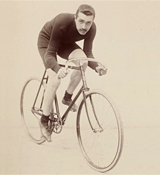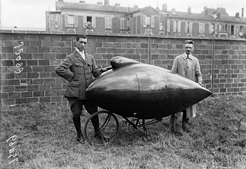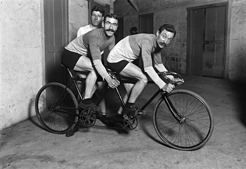by Christian Hamel
The bicycle is the only form of land-based transport that requires neither animal traction nor an energy source. In no time at all, its invention had a decisive impact on society and it is now a means of transport with a bright future thanks to the new possibilities it offers both in urban environments and natural spaces.
There are some wonderful legends about the origins of the bicycle: from Baron de Sivrac’s celerifere in 1790 to Leonardo da Vinci’s drawings in the Codex Atlanticus, even the cycling cherub that appears in a stained-glass window in St Giles Church in Stoke Poges near London; there’s no shortage of mysteries! It was Carl Friedrich Drais von Sauerbronn who, on 18 June 1817, unveiled what he called his “running machine”, a frame resting on two wheels with a steering device that had to be straddled and propelled with the legs. It made it possible to travel 20 km in two hours. The patent was filed in January 1818 and, under the name velocipede, the invention met with success in France, while Baron von Drais died on 10 December 1851 in Karlsruhe, in ill health and embroiled in a number of legal battles.
In 1861, Pierre Michaux and his son Ernest brought about a decisive improvement by adding pedals to the front wheel. By 1869, more than a hundred French companies were building velocipedes. The freewheeel, ball bearing, metal alloy wheels and rubber tyres improved the velocipede, which became the penny-farthing when the diameter of the front wheel was widened to gain speed. Inventors competed with their ideas until 1879, when the Englishman HJ Lawson patented the bicycle: a penny-farthing with a pedal mechanism and chain. In 1884, another Englishman, John Kemp Starley, gave the name “The Rover” to an almost definitive form of the machine, with two wheels almost equal in diameter and a diamond-shaped frame. With the advent of rubber tyres thanks to Dunlop, the bicycle would achieve worldwide success and revolutionise urban traffic and society’s most deeply entrenched traditions.
At that time, women wore crinolines. To ride a bicycle, they would need to wear baggy trousers and blouses, prohibited in France by a law passed on 17 November 1900. Two communiqués were issued in 1892 and 1909 authorising the wearing of trousers for bicycle (and horse) riders. Intellectuals, the gentry of the time and the middle classes gradually abandoned horses, delighted to be able to get around so easily and cheaply.
The idea of racing quickly took hold. In 1867, a race was staged from Paris to Versailles and, on 7 November 1869, James Moore travelled the 123 km between the Arc de Triomphe and the Church of Saint Paul in Rouen in 10 hours 40 minutes (including stops!). More than a hundred races were organised that year. Jules Léotard, the inventor of the flying trapeze, and Clément Ader, one of the pioneers of aviation, successfully participated in a number of events.
The most prestigious race set off from Montgeron (Essonne) on 1 July 1903 and finished in Paris, at the Parc des Princes, on 17 July, after making a tour of France. This Tour de France was to seal a deep relationship between all levels of society and what the journalist Albert Londres called “the slaves of the road”. The First World War interrupted the annual race and three of its early winners died in battle (Octave Lapize, François Faber and Lucien Petit-Breton), as well as around fifty of those who had competed in the event when it was in its infancy.
The development of leisure activities saw the advent of the tandem, which allowed the first beneficiaries of paid leave to go on holiday, followed by the mountain bike and a bike with a small frame and wheels, the BMX, which offered potential for acrobatics and speed races on tracks inspired by motocross.
Some countries, such as China and the Netherlands, have made cycling popular by creating special bike lanes. Known in France by the poetic nickname “petite reine”, or little queen, bicycles can be found all over the world and, at the dawn of the twenty-first century and the looming energy crisis, their promise knows no bounds.
Find out more on Gallica :
- Au temps des premières bicyclettes, a film by Albert Bayard (15 min 30 s), produced and distributed by the Centre national de documentation pédagogique (Montrouge), 1979,
through the Réseau Canopé.
- Sports pictures by Jules Beau.
1. A fake invented by the journalist Louis Baudry when the patent for the “draisine” was filed by Karl Drais in 1817.



